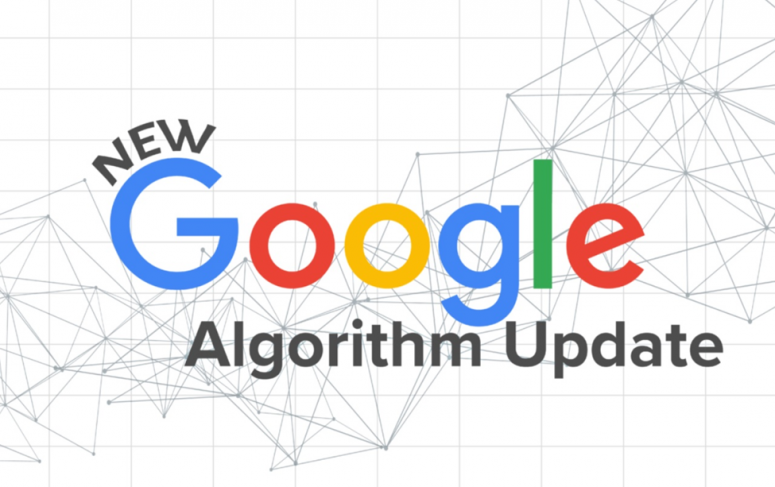Google’s search algorithms have undergone significant transformations over the years, evolving from basic ranking factors to complex systems designed to deliver highly relevant search results. Each major algorithm update has reshaped the SEO landscape, introducing new criteria for ranking websites and influencing how search engine optimization (SEO) strategies are developed. This comprehensive overview explores the evolution of Google’s algorithms from Panda to Fred, examining their key features, impacts, and the lessons learned along the way.
1. Google Panda: Revolutionizing Content Quality
Launched: February 2011
Objective: Improve the quality of search results by penalizing low-quality content and rewarding high-quality, authoritative content.
Key Features:
- Content Quality: Panda introduced a focus on content quality, targeting sites with thin, duplicate, or low-value content. Sites with high-quality, original content were rewarded with better rankings.
- User Experience: Panda also considered user experience factors such as site design, readability, and engagement. Sites with poor design and high bounce rates were more likely to be penalized.
Impact on SEO:
- Content Strategy: Post-Panda, SEO strategies shifted towards creating in-depth, informative, and engaging content. Websites began focusing on producing high-quality articles, blog posts, and other content types that provided real value to users.
- Content Audits: Many sites conducted extensive content audits to identify and improve or remove low-quality pages. This led to a rise in content optimization practices and a greater emphasis on content relevance.
Lessons Learned:
- Quality Over Quantity: The importance of high-quality content was reinforced. Sites that prioritize content quality and user experience see better results compared to those that rely on quantity or low-value content.
- Continuous Improvement: Regularly updating and improving content is crucial for maintaining high rankings and meeting user expectations.
2. Google Penguin: Addressing Link Schemes
Launched: April 2012
Objective: Combat manipulative link-building practices and improve the quality of search results by penalizing sites with spammy or low-quality backlinks.
Key Features:
- Link Quality: Penguin targeted sites with unnatural or manipulative link profiles, including paid links, link farms, and excessive link exchanges.
- Penalty Mechanism: Sites engaging in these practices faced penalties that resulted in a significant drop in rankings. Recovery required the removal of spammy links and the disavowal of harmful backlinks.
Impact on SEO:
- Link Building Practices: Post-Penguin, SEO strategies shifted towards acquiring high-quality, natural backlinks from reputable sources. There was a greater focus on earning links through valuable content and legitimate outreach.
- Backlink Analysis: The importance of regularly monitoring and analyzing backlink profiles became evident. Tools and practices for identifying and addressing harmful links became standard in SEO workflows.
Lessons Learned:
- Ethical Link Building: The update highlighted the need for ethical link-building practices and the dangers of engaging in manipulative tactics. Building relationships and creating valuable content are more effective for acquiring quality backlinks.
- Regular Monitoring: Continuous monitoring of backlink profiles helps prevent penalties and maintain a healthy link profile.
3. Google Hummingbird: Emphasizing Semantic Search
Launched: September 2013
Objective: Improve search result relevance by better understanding the context and intent behind user queries, rather than focusing solely on individual keywords.
Key Features:
- Semantic Search: Hummingbird introduced semantic search capabilities, allowing Google to understand the meaning behind queries and deliver more relevant results based on user intent.
- Conversational Queries: The update supported more natural, conversational search queries, reflecting the increasing use of voice search and long-tail keywords.
Impact on SEO:
- Content Optimization: SEO strategies began to focus on creating content that addressed user intent and provided comprehensive answers to relevant questions. Keyword research expanded to include topics and themes rather than just individual keywords.
- Voice Search: The rise of voice search prompted optimization for conversational queries and natural language, leading to the incorporation of long-tail keywords and question-based content.
Lessons Learned:
- Intent-Based Optimization: Understanding and addressing user intent became crucial for SEO success. Creating content that answers users’ questions and provides valuable information leads to better rankings.
- Adapting to Search Behavior: SEO strategies need to adapt to changing search behaviors and technologies, including voice search and conversational queries.
4. Google Pigeon: Enhancing Local Search Results
Launched: July 2014
Objective: Improve the relevance and accuracy of local search results by aligning them more closely with traditional web search signals.
Key Features:
- Local Search Signals: Pigeon improved local search results by integrating traditional ranking factors, such as domain authority and quality backlinks, with local relevance signals.
- Local Listings: The update impacted local business listings and maps, affecting how local businesses appeared in search results and on Google Maps.
Impact on SEO:
- Local SEO: Businesses needed to focus on local SEO practices, including optimizing Google My Business listings, acquiring local backlinks, and ensuring consistent NAP (Name, Address, Phone) information across directories.
- Local Relevance: The importance of local relevance and user proximity to the search query became more pronounced, leading to increased emphasis on local optimization.
Lessons Learned:
- Local Optimization: Businesses targeting local audiences must prioritize local SEO efforts and ensure accurate, consistent information across online platforms.
- Integration of Signals: Combining traditional SEO factors with local relevance signals is essential for achieving high rankings in local search results.

5. Google Mobile-Friendly Update: Adapting to Mobile Search
Launched: April 2015
Objective: Boost the rankings of mobile-friendly websites in mobile search results, encouraging site owners to create mobile-responsive designs.
Key Features:
- Mobile Responsiveness: The update rewarded websites that were mobile-friendly and provided a positive user experience on mobile devices. Sites with responsive designs or mobile-specific versions were prioritized in mobile search results.
- Mobile-First Indexing: Although mobile-first indexing was officially rolled out later, the Mobile-Friendly Update marked the beginning of Google’s focus on mobile search.
Impact on SEO:
- Mobile Optimization: The update underscored the importance of mobile optimization, leading many websites to adopt responsive designs and improve mobile usability.
- User Experience: User experience on mobile devices became a critical ranking factor, influencing how sites were designed and optimized for various screen sizes.
Lessons Learned:
- Mobile-First Approach: Prioritizing mobile optimization is essential for SEO success, given the growing number of users accessing the web via mobile devices.
- Responsive Design: Implementing responsive design ensures a consistent user experience across different devices and improves rankings in mobile search results.
6. Google RankBrain: Integrating Artificial Intelligence
Launched: October 2015
Objective: Enhance search result relevance by incorporating artificial intelligence and machine learning to better understand and interpret search queries.
Key Features:
- AI and Machine Learning: RankBrain uses AI to process and interpret search queries, helping Google understand complex or ambiguous searches and deliver more accurate results.
- Query Interpretation: The update focuses on interpreting the meaning behind user queries, especially for unfamiliar or unique searches.
Impact on SEO:
- Query Context: SEO strategies shifted towards understanding and addressing the context and intent behind user queries. Content optimization became more about providing comprehensive answers to a wide range of search queries.
- Content Relevance: The importance of relevance and context in content creation increased, emphasizing the need to address various aspects of user queries and provide valuable, well-rounded information.
Lessons Learned:
- AI Integration: Embracing AI and machine learning in SEO practices can help better align content with user intent and improve search rankings.
- Contextual Content: Creating content that addresses the full context of user queries and provides valuable insights is crucial for success.
7. Google Possum: Refining Local Search Results
Launched: September 2016
Objective: Improve the accuracy and diversity of local search results by adjusting the way Google handles local search queries and business listings.
Key Features:
- Local Results: Possum refined local search results by reducing the influence of proximity and providing more varied results based on searcher location and relevance.
- Business Listings: The update impacted how local business listings were displayed, including how businesses were ranked and how results were filtered based on user location.
Impact on SEO:
- Local Listings: Businesses needed to optimize their local listings and focus on obtaining positive reviews and relevant local citations to improve their rankings.
- Local Relevance: The update highlighted the importance of local relevance and accurate business information, requiring businesses to pay closer attention to their local SEO efforts.
Lessons Learned:
- Diverse Results: Providing diverse and relevant local search results requires a focus on local optimization and maintaining accurate, consistent business information.
- Local Citations: Building and managing local citations and reviews is essential for improving visibility in local search results.
8. Google Fred: Addressing Low-Quality Content
Launched: March 2017
Objective: Target and penalize websites with low-quality content and aggressive monetization tactics, aiming to improve the quality of search results.
Key Features:
- Content Quality: Fred focused on sites that prioritized aggressive monetization tactics, such as excessive ads and low-quality content, at the expense of user experience and content value.
- User Experience: The update penalized sites with poor user experience and high ad-to-content ratios, impacting rankings for sites that did not prioritize user value.
Impact on SEO:
- Content and Monetization: SEO strategies had to balance monetization efforts with content quality and user experience. Sites with excessive ads and low-value content faced challenges in maintaining rankings.
- User Experience: Improving user experience and providing valuable, well-crafted content became even more critical for SEO success.
Lessons Learned:
- Quality Over Ads: Prioritizing content quality and user experience is essential, even when monetization is a key focus. Sites that provide real value to users are more likely to succeed.
- Balanced Approach: A balanced approach to monetization and content quality ensures that both user experience and revenue generation are addressed.
Wrapping it up
The evolution of Google’s algorithms from Panda to Fred represents a journey towards enhancing search result relevance and user experience. Each algorithm update has introduced new criteria and signals for ranking websites, influencing SEO practices and strategies. Understanding these updates and their impacts helps SEO professionals adapt and thrive in a dynamic search landscape.
As Google continues to refine its algorithms, staying informed about updates, embracing best practices, and focusing on high-quality content and user experience will remain key to SEO success. By learning from the past and anticipating future changes, you can develop effective SEO strategies that align with Google’s evolving criteria and deliver valuable results for users.




